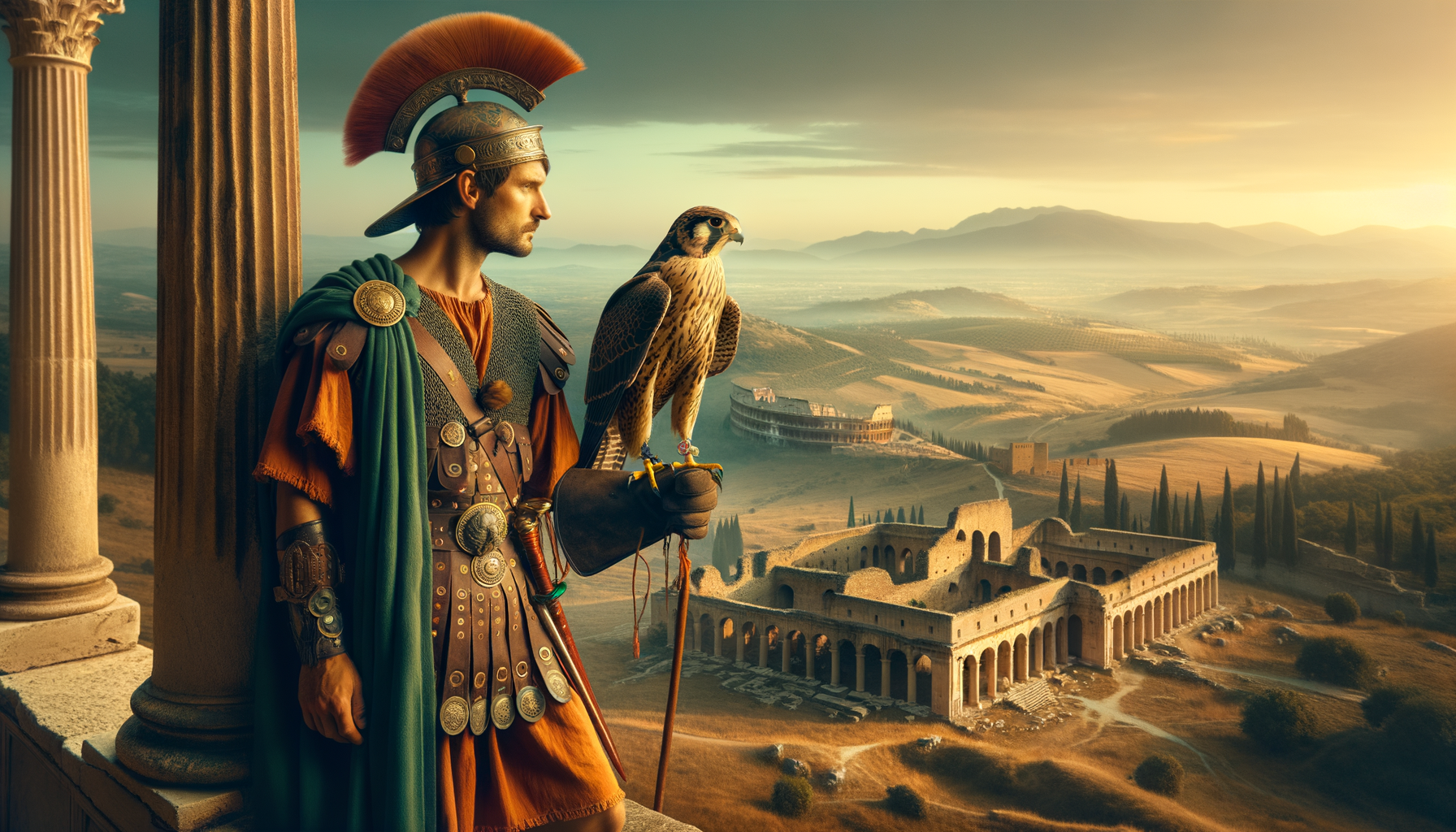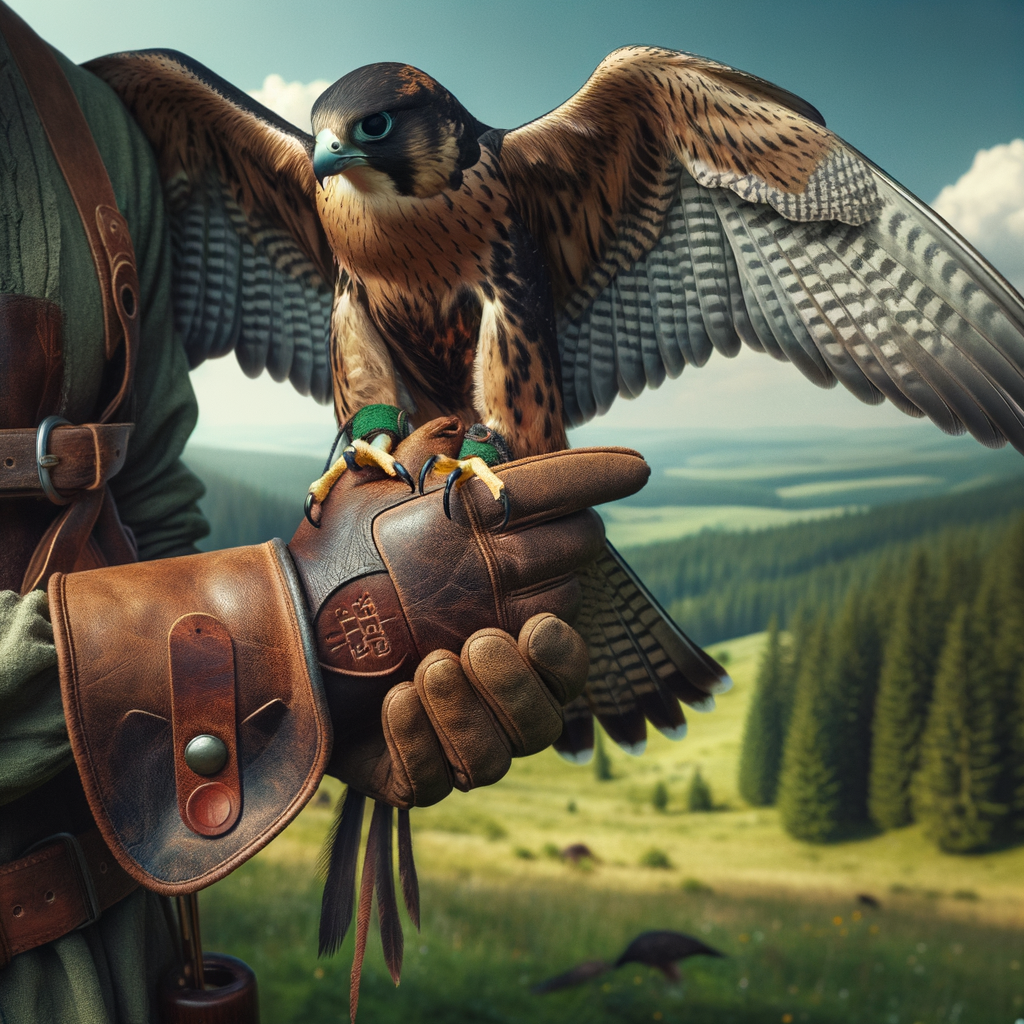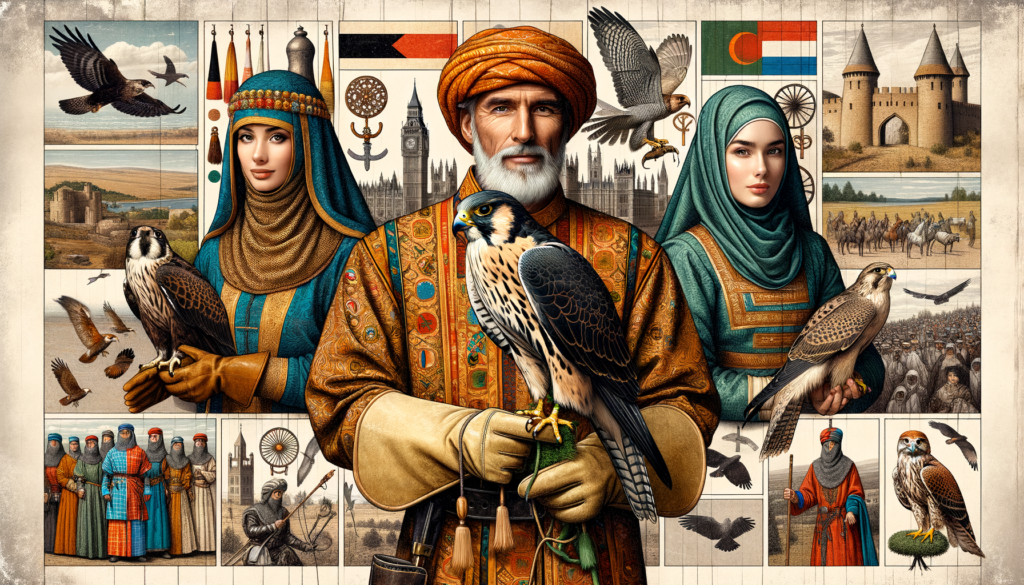Fascinating Insights About Falconry in the Roman Empire
- Falconry has ancient roots, thriving even in Roman times.
- Roman aristocrats valued falconry as an elite sport.
- Birds such as falcons and hawks were trained to hunt and return prey.
- This sport was not just about fun but also provided fresh meat.
- Wealthy Romans had specialized trainers for their birds, known as falconers.
- Detailed guides and manuscripts about falconry techniques were documented.
- Falconry signified status and power among Roman elites.
- The sport fostered a deep bond between humans and their birds of prey.
- Despite its elite association, falconry knowledge and skills were respected widely.
Dive deeper into the world of falconry and explore its rich heritage!
Discovering Falconry in the Roman Empire: A Journey Back in Time
Hey there, adventurer! Have you ever wondered what it would be like to train and hunt with a majestic bird of prey, just like those warriors from the Roman Empire? Picture this: You’re in the lush, green landscapes similar to the beautiful Irish countryside, where falcons soar high above the rolling hills, their keen eyes spotting prey from miles away. Just like the ancient Celts passed down their legendary storytelling traditions, the Romans passed down the incredible art of falconry.
In this amazing tale of history, we’ll embark on a thrilling flight back in time to uncover how the Romans admired and practiced falconry’an art that’s as old as the hills of Ireland themselves. You might think of it as training a wild hawk to be your hunting companion, much like how a wise Irish farmer trains his sheepdog. It takes patience, skill, and a deep bond of trust. Keep reading to find out how this majestic sport evolved and why it remains a fascinating part of our cultural heritage.
At Learn Falconry, we’re not just about guiding you through the technicalities; we’re here to share the captivating stories that shaped this ancient practice. So, get comfortable, and let’s dive into a world where history, nature, and legends come together in a colorful tapestry of discovery!
The Enchanting World of Roman Falconry
Imagine living in the Roman Empire, surrounded by grand architectural marvels and bustling marketplaces. Amidst this vibrant backdrop, there was an intriguing and exciting practice that captured the hearts of many: Roman falconry. This fascinating art of using trained birds of prey for hunting dates back thousands of years and holds a rich and captivating history.
A Glimpse into Falconry History in Rome
Falconry history Rome is truly remarkable. Although the precise origins of falconry can be somewhat murky, many historians believe that it began in Mesopotamia and Eastern Asia around 2000 BCE. However, it was during the Roman era that this practice garnered a notable following, becoming deeply woven into the fabric of Roman society. For more about the ancient roots of falconry, visit our history of falconry page.
The Rise of Historical Falconry in the Roman Empire
The practice of historical falconry gained prominence in the Roman Empire around the 4th century AD, primarily among the elite and noble classes. It was a prestigious activity that symbolized power, wealth, and social status. The Romans were known to have meticulously trained birds such as falcons and hawks to aid in hunting expeditions. These birds of prey would swoop down with incredible speed and agility to capture game, showcasing their impressive skills and strength.
Roman Falconry Techniques and Equipment
Techniques
In Roman falconry, hunters employed various methods and strategies to maximize their success. For example, they used specific falconry techniques like lure flying, where hunters would swing a lure’a piece of meat attached to a string’to train the birds to return after catching prey. Understanding these techniques required dedication and skill, making the art of falconry both challenging and rewarding. For those interested in the different methods used in falconry, explore our falconry techniques page.
Equipment
The Romans also developed specialized falconry equipment to facilitate their hunting endeavors. Some essential items included hoods to keep the birds calm while not hunting, gloves for the falconer’s protection, and jesses and leashes to secure and handle the birds. Each piece of equipment played an integral role in ensuring the safety and effectiveness of the hunt. For more information on the equipment used in falconry, check out our falconry equipment section.
Training Falcons in Roman Times
Training falcons in Roman times was a meticulous and time-consuming process. It required patience, consistency, and a deep understanding of the birds’ behaviors. Falconers used positive reinforcement techniques, reward-based training, and strategic conditioning to harness the falcons’ natural hunting instincts. Modern falconers can learn a lot from these ancient methods, many of which are still relevant today. To dive deeper into how falcons are trained, visit our page on training a falcon.
The Legacy of Roman Falconry
The legacy of Roman falconry continues to influence and inspire falconers worldwide. While the techniques and equipment have evolved, the essence and excitement of falconry remain unchanged. This timeless practice stands as a testament to humanity’s connection with nature and the remarkable bond that can form between humans and birds of prey.
Embark on your falconry journey and uncover more about its rich history, techniques, and equipment. Whether you’re a beginner or an advanced falconer, you’ll find valuable insights and resources on our Learn Falconry website that will help you soar to new heights in this thrilling and ancient craft.
The Roman Empire and Falconry: An Intriguing Journey
Falconry has been an extraordinary part of human history, spanning over 4,000 years. Let’s dive into how this fascinating practice was intertwined with the history of the Roman Empire.
Falconry Origins and Travel to Europe
Falconry began in the Asian steppes, where ancient societies first trained birds of prey for hunting. It was later introduced to Europe by various groups such as the Huns, Mongols, and Crusaders. These birds of prey became symbols of power and authority during the Roman Empire.
UNESCO Recognition
Today, falconry is considered a living human heritage by UNESCO. This acknowledgment highlights its cultural significance and the dedication required to train and handle these majestic birds properly.
Focus on Conservation and Ethics
Modern falconry emphasizes ethics and conservation. Practitioners today strive to protect falcons, their quarry, and natural habitats. They educate children and the public about the importance of birds of prey, showcasing how these magnificent creatures are essential to our ecosystem.
International Cooperation
Falconry isn’t confined to one nation. Countries around the world, including Bulgaria and Romania, collaborate to preserve and promote this ancient tradition. These efforts ensure that falconry remains a respected and cherished practice globally.
Roman Falconry Events
Curious about how falconry was showcased during Roman times? Well, you can experience a taste of history at the Birdoswald Roman Fort on August 3-4, 2024. The event includes:
- Historical Displays: Enjoy historical presentations that show how falconry and hawking were practiced during the Roman Empire.
- Flying Displays: Witness birds of prey in action with flying demonstrations throughout the day.
- Bird Mews: Observe a collection of falcons, hawks, and owls in a setting that closely resembles their historical surroundings.
This event is included in the standard entry price at Birdoswald Roman Fort, and members receive free entry.
Specific Data Points on Falconry in 2024
Here are some interesting data points that highlight modern conservation efforts and technological advancements:
- Peregrine Falcon Banding: The Virginia Department of Wildlife Resources banded and collected data on 2024 peregrine falcon chicks. This initiative focuses on species conservation and monitoring.
- Data Protection Efforts: Advanced machine learning algorithms and behavioral analytics are used to safeguard falconry data, ensuring real-time threat detection and mitigation.
- Falcon Depth Chart and Sports Context: In a completely different context, the Atlanta Falcons’ 2024 depth chart included players such as Darnell Mooney, Rondale Moore, and Ray-Ray McCloud, showcasing the diversity of the term “falconry” in modern times.
By looking back at history and how it shapes our present and future, we can appreciate the enduring significance of falconry in various dimensions.
Falconry in the Roman Empire: Preservation and Practice
The practice of falconry during the Roman Empire was more than just a leisurely activity. It involved:
- Techniques: Romans perfected the art of training birds, emphasizing loyalty and cooperation between the bird and the falconer.
- Usage: Birds were used not only for hunting but also as symbols in military and aristocratic circles.
- Conservation: Efforts were made to ensure the well-being of these birds, similar to modern conservation strategies.
By understanding these foundational practices, we can see how the principles of falconry have both evolved and remained steadfast over the millennia.
In conclusion, the Roman Empire’s influence on falconry extends far beyond mere hunting. It is a story of preservation, ethics, and a shared cultural heritage that continues to soar through the skies of history.
The Legacy of Falconry in the Roman Empire
Falconry has an ancient and storied history, extending back over 4,000 years, and its influence reached as far as the Roman Empire. Recognized as a living human heritage by UNESCO, this noble practice has been passed down through generations, blending tradition, ethics, and conservation.
In modern times, the renaissance of falconry is evident in events like the ones scheduled at Birdoswald Roman Fort in 2024. These events provide a splendid opportunity to witness historical displays of falconry and hawking, accompanied by flying displays of diverse birds. The event not only includes the spectacle of hawks, owls, and falcons in their period surroundings but also emphasizes the essence of conservation, education, and the connection with nature.
By attending such events, visitors can deepen their appreciation for this ancient art and its ongoing global initiatives to safeguard both the birds and their habitats. The continued cooperation between international falconry organizations underlines a commitment to preserving this timeless tradition for future generations. Join us in celebrating the majestic art of falconry and its enduring legacy.



